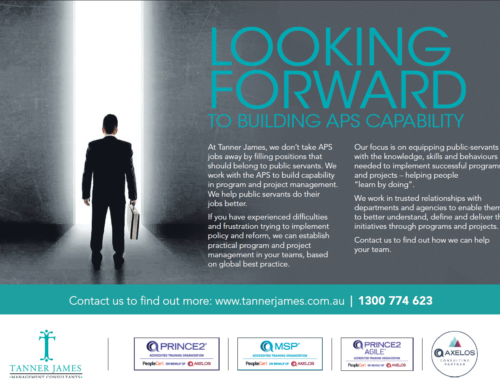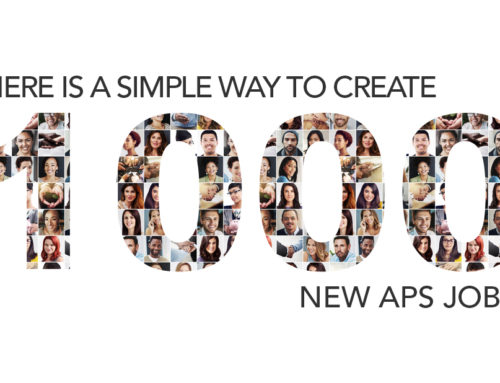As a PRINCE2® trainer for many years, I have often been asked whether you can use Agile delivery in a PRINCE2 project management environment.
I typically give the ‘short answer’ – ‘Very much so; in fact they are very well suited to one another’,
More often than not this has inspired lots of challenging questions about the apparent contradictions between the ‘control’ provided by PRINCE2 and the ‘freedom of expression’ provided by Agile delivery. I think it’s not exaggerating to say some people see PRINCE2 as ‘ancient thinking’ and Agile as ‘modern thinking’.
I am often led to suggest that I could expand on my explanation if the participant was prepared to buy a bottle of (quality) chardonnay and we can chat for a few hours in front of a nice toasty fire, for I certainly see no contradiction.
Enter Kostas!
Quite recently I googled the word ‘Axelos’ – the owners of a new approach called PRINCE2 Agile® – and turned up the name “Kostas Axelos (1924 to 2010)”.
From my limited readings, Kostas was a modern Greek philosopher who tried to reconcile the “ancient thinking” of Heraclitus with the “modern thinking” of Marx, Nietzsche, Freud, Heidegger, and others in order to gain a new perspective on some of the problems of Marxism during his time. Kostas engaged with contemporary thinking and the emerging global world by seeking to discover the “unseen horizon encircling all things” (1964), further refining his method as a ‘continuous wandering through the splintered “wholeness” that surrounds contemporary human beings(1) .
Essentially he recognised that what appeared to be contradictions were not necessarily contradictions at all. It drew me to wonder if Kostas liked chardonnay. I have a feeling I’d like him, but I digress!
As the Chardonnay flows
For those now enjoying a Chardonnay, or a hot chocolate if you prefer, or sitting at work now thinking about warm fires, I thought I might outline why PRINCE2 and Agile have always been well suited.
The ideal management environment sees Executives who lay out the direction and then trust the people at the coal face to do what is required. The Executives ensure that they are well informed without excessive interference with the work at hand. Good executives see their role as facilitating effective delivery by setting direction and removing barriers.
In return those doing the work undertake to keep Executives informed and to raise any killer problems before they kill! The workers are encouraged to use their skills and experience to deliver the best solution.
Such a world of trust encourages common vision, innovation and success.
PRINCE2 and Agile approaches share all of these underpinning aims. There is no contradiction to be found between the approaches at this level. If there are contradictions they are only to be found in the mechanics of implementation. The relationship at the philosophical level is the thing that naturally binds the two approaches.
Now that relationship has been formalised with clear guidance on how to use Agile delivery approaches within a PRINCE2 environment and how to best establish use of PRINCE2 to support agile delivery.
AXELOS Launches PRINCE2 Agile
AXELOS (remember them?) has formalised that relationship by launching its latest best practice product, PRINCE2 Agile™.
PRINCE2 Agile is primarily targeted at organisations that have implemented PRINCE2 to at least some degree. It is ideal for organisations looking to take advantage of Agile delivery practices or those who currently use Agile and wish to formalise the linkages to their PRINCE2 Project Management framework.
The good news is that, in Australia, most government departments and many successful businesses have already invested in PRINCE2 and many are experimenting with a range of Agile approaches so are well placed to take advantage of PRINCE2 Agile.
PRINCE2 Agile is not a substitute for PRINCE2, nor is it an ‘alternative’ to Agile. PRINCE2 Agile is an adjunct to both which describes how to use Agile approaches within the PRINCE2 method. The PRINCE2 Agile Guide positions PRINCE2 as providing core Governance and Project Management functions and Agile as providing the product delivery approach. It then focuses on blending the two.
The Guide examines each of the seven themes of PRINCE2 and answers a raft of questions that arise when blending Agile and PRINCE2, such as how to ‘blend and weave’ the governance provided by a Project Board with the innovation provided by self-organising delivery teams of Agile. It also explores what needs to be agreed in advance and what can be left to innovation during delivery.
PRINCE2 Agile shows very effectively how the philosophies of PRINCE2 and Agile are not contradictory at all when we come to understand the intentions behind each.
The Guide also addresses the process model of PRINCE2 and highlights how a range of Agile approaches might be used to fulfil the expectations of the seven PRINCE2 processes. After all, PRINCE2 has always been clear that the processes must be tailored to suit the environment. PRINCE2 Agile simply outlines a range of approaches that can be used in an Agile environment to meet that need.
There is quite a lot of focus within the guide on the most common Agile techniques such as Kanban and Scrum. It puts such techniques in context in both a theoretical and practical sense.
The Guide pays substantial attention to Agile concepts such as Rich Communication and User Stories. It also introduces the ‘Agilometer’ that helps determine risks associated with introducing Agile and approaches to deal with those risks.
PRINCE2 Agile fills a void that has been obvious to many practitioners for a long time. Hopefully it will help to dispel many of the myths surrounding both PRINCE2 and Agile. PRINCE2 Agile has been one of the most anticipated releases from the Axelos product suite (which includes PRINCE2, ITIL, P3M3 and Managing Successful Programmes). I don’t think it will disappoint.






Leave A Comment